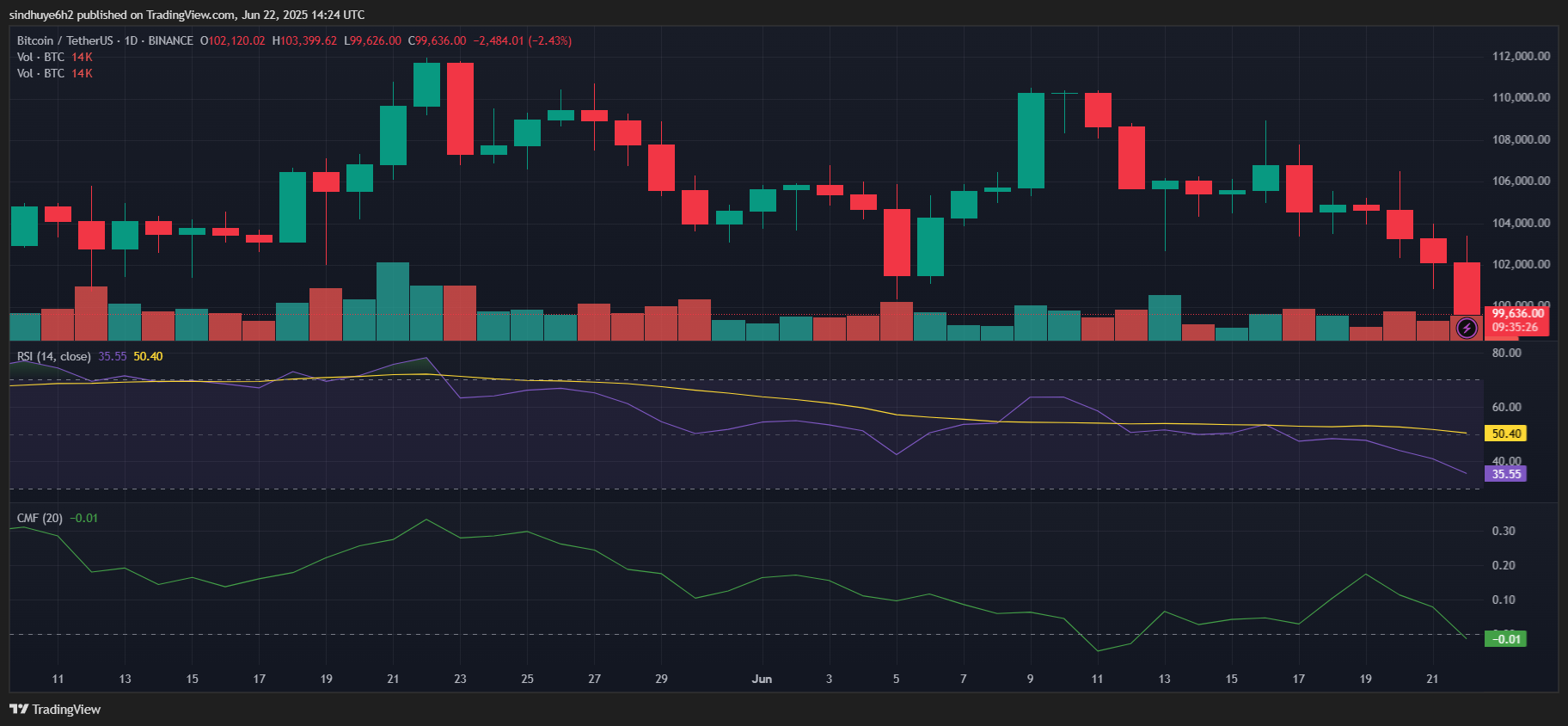- Bitcoin (BTC) drops 3.8% to $99,636 amid geopolitical tensions.
- U.S. airstrikes and Iran’s retaliation triggered global risk-off moves.
Bitcoin (BTC) traded at $99,636.89 on June 22, down 3.8% in 24 hours. The global crypto market reacted swiftly to heightened geopolitical risks and weakening technical conditions. Amid the drop, Bitcoin’s market capitalization stood at $1.98 trillion, marking a 3.45% daily decrease.
Meanwhile, its 24-hour trading volume surged 17.56% to $52.24 billion, showing increased panic activity. The market cap ratio rose to 2.52%, signaling heavy sell-side pressure.
The sharp decline stemmed from multiple interconnected drivers. The U.S. airstrike on Iran’s Fordow nuclear site triggered massive liquidations, wiping out over $1 billion in leveraged long positions.
In retaliation, Iran shut the Strait of Hormuz, leading to a dramatic spike in global oil prices. As a result, risk sentiment soured across markets, dragging Bitcoin lower. ETF inflows also weakened, slowing to just 3,300 BTC per day from a peak of 9,700, further dampening institutional enthusiasm.
Will BTC Bounce Back?
From a technical standpoint, Bitcoin failed to hold the key psychological level at $100,000. Current support appears near $97,000, with visible order book liquidity concentrated there. If bears breach this floor, the next likely downside target lies in the $93,000–$94,000 zone, although the probability remains capped at 25%.

Resistance, meanwhile, looms at $102,000 and $106,000. A recovery beyond $106,000 could shift short-term momentum in favor of bulls. Indicators suggest more downward pressure. The RSI stands at 35.55, sliding below the neutral threshold and indicating increasing bearish momentum.
The RSI moving average, currently at 50.40, widens the divergence, confirming the loss of buying strength. A continued drop below 30 could signal a deeply oversold condition, although it is not yet present.
Simultaneously, the Chaikin Money Flow (CMF) hovers just under zero at -0.01, reflecting weak capital inflows. This reading often accompanies price instability and reduced investor conviction. Furthermore, the moving averages failed to cross positively.
Though macro uncertainty dominates, some traders expect Bitcoin to rebound, as it has occasionally gained from geopolitical chaos. Yet, until stability returns or volume shifts bullish, downside risks persist. Analysts closely watch $97,000 as a potential reversal zone, but eyes also remain on the broader U.S.–Iran escalation, which could redraw crypto’s short-term path.
 thenewscrypto.com
thenewscrypto.com
